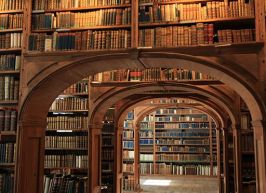
The Dream of the Red Chamber
- Novel
- Zhou Dynasty
What It’s About
The Rise and Fall of a Chinese Civilization
The sinologist John Minford, who was involved in the complete translation of The Dream of the Red Chamber in the 1980s, can testify to the novel’s enduring popularity and quality as a magic window into the Chinese mind: “Mention of it triggers an instant gleam of recognition, and opens up new possibilities of communication.” At the same time, it is also a tremendous challenge. Depending on the edition and translation, the reader has to process well over 300 characters with names that all sound similar to the Western ear. It features an eclectic mix of elusive, expressionistic prose and poetry on the one hand, and realistic, scathing social criticism on the other. The sexual act is circumscribed as a “Sport of Cloud and Rain,” mortal illnesses are cured with yummy swallows’ nests (or not) and tea is made from the previous year’s melted snow. Sometimes the novel’s main characters seem surprisingly familiar, and at other times they appear strangely alien to the Western reader. Reading the book is a bit like looking at an intricate Chinese artwork from that era: precise lines, perfect composition, opulent coloration – yet also a window into an entirely different world.
Summary
About the Author
Cao Xueqin was born into a wealthy Han Chinese family around 1720. His ancestors had served in the Manchu army and were subsequently rewarded with prestigious posts in the Imperial administration. His exact date of birth remains uncertain. Cao’s great-grandmother is said to have been Emperor Kangxi’s wet nurse, and his grandfather Cao Yin was the emperor’s personal friend and confidant. During Kangxi’s reign the family enjoyed a high standing with the Imperial Court and amassed great wealth, holding the lucrative post of Commissioner of Imperial Textiles in the Southern Jiangsu province for three generations. After Kangxi’s death, however, the clan’s fortunes began to sink, as the stern Confucian Emperor Yongzheng came to power and started to clamp down on corruption and illegal financial dealings. Having issued several warnings, he had the family’s entire property confiscated and its patriarch arrested in 1727. Subsequently, the family was forced to leave their mansion in Nanjing and move to a modest dwelling in Peking. Cao Xueqin was still a child then. A brilliant boy and talented painter and writer, he proved unfit for an academic career. He was hired as a private teacher of Manchu children, only to be fired after impregnating a maidservant. By the middle of the century he hit rock bottom, selling the occasional painting, drinking too much and writing The Dream of the Red Chamber in small installments over some 10 years or so, often providing a new chapter to family and friends in exchange for some food and wine. Cao Xueqin died around 1763, purportedly from a broken heart after the death of his only son. Around this time, several handwritten copies of the novel’s first 80 chapters began to circulate.











Comment on this summary or Diskussion beginnen